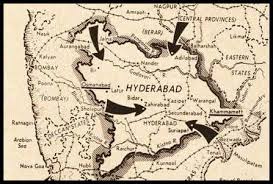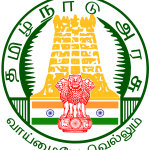
On this day (September 13) 75 years ago, the Indian Army launched Operation Polo, the military action to integrate the princely state of Hyderabad with the Indian Union. By September 18, 1948, the forces of the Nizam, who had been dithering on joining India, were routed. Home Minister Sardar Vallabhbhai Patel termed the military offensive as “police action”.
The background
Hyderabad, consisting of 17 districts including Aurangabad (now in Maharashtra) and Gulbarga (now in Karnataka), was the richest of the princely states, and one of the most populous. Its population was majority Hindu, but its rulers were almost entirely Muslim. It did not have a border with Pakistan, but Nizam Mir Osman Ali Shah had every intention to have fraternal relations with that country.

In November 1947, the Nizam signed a standstill agreement with India, under which status quo would be maintained for a year, and the Indian government would not exercise any authority over Hyderabad. The Nizam’s government took advantage of the lull of the standstill agreement to increase its irregular force of the Razakars, which were led by Maj. Gen. SA El Edroos, the Arab commander-in-chief of the Hyderabad state forces.
The Razakars committed excesses on the ordinary people of Hyderabad, and carried out cross-border raids, even as overtures were made to Pakistan with the intention to establish an independent country within the heart of India.
The military action
The Indian government launched Operation Polo on September 13, 1948. The forces of the Hyderabad state numbered fewer than 25,000, and only a fraction of them were well trained. By one estimate there were no more than two brigades’ worth of opposition. The Razakars were more of a nuisance whom the Indian troops swatted aside. The boast of Mir Laik Ali, the Prime Minister of Hyderabad, that 100,000 soldiers would meet the challenge of the Indian Army proved desperately hollow.
The Indian forces were led by Maj. Gen. Jayanto Nath Chaudhuri, General Officer Commanding of 1 Armoured Division, who later became Chief of the Army Staff. The primary strike was led from the west by Maj. Gen. Chaudhuri’s division, aided by subsidiary and supporting thrusts from the north, south, and east of the state.
The primary strike by 1 Armoured Division included 1 Horse (less one squadron) and 9 Dogra (less one company), and a Smash Force comprising 3 Cavalry, 17 Horse(less one squadron) and one company of 9 Dogra. A Kill Force led by 7 Infantry Brigade comprised 2 Sikh, 1 Grenadiers, 14 Rajpur, and one squadron of 14 Horse. Another component of the western thrust was the Vir Force which comprised 9 Infantry Brigade, 3/2 Punjab, and 2/1 Gorkha Rifles.
Hyderabad’s surrender
The Nizam announced a cease fire on September 17. On September 18, Maj Gen Chaudhuri entered Hyderabad city with his forces where Maj Gen El Edroos surrendered to him. Maj Gen Chaudhuri was later appointed the Military Governor of Hyderabad.
Havildar Bachhitar Singh of 2 Sikh was awarded the first Ashoka Chakra of Independent India posthumously. He laid down his life on September 13 while advancing on Naldurg, which is now in Maharashtra.





